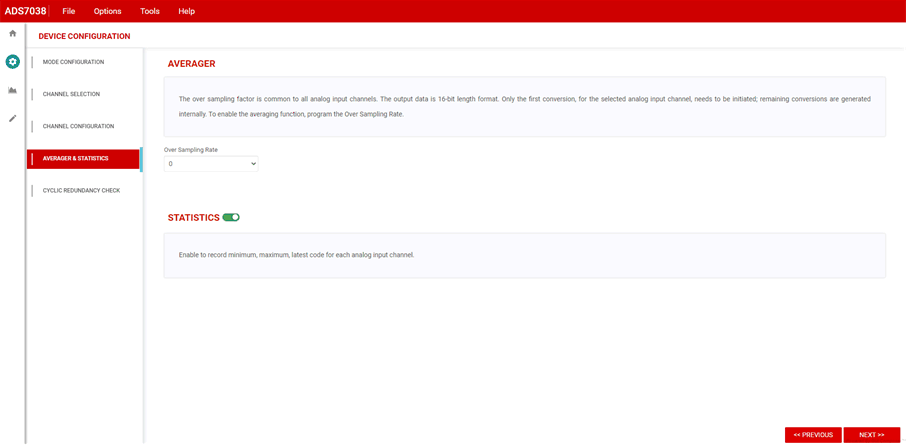SBAU279 October 2020 ADS7038-Q1
- Trademarks
- 1Introduction
- 2ADS7038Q1EVM-PDK Overview
- 3ADS7038Q1EVM-PDK Initial Setup
- 4Input Signal-Conditioning Circuitry on the ADS7038Q1EVM
- 5Bill of Materials, Printed Circuit Board Layout, and Schematics
3.3.2.4 Averaging & Statistics
Within the averaging function page, as Figure 3-10 shows, the oversampling ratio can be selected through the drop-down option. The oversampling ratio applies to all analog input channels enabled. Statistics to show the minimum, maximum, and latest codes can also be enabled here.
 Figure 3-10 Averaging & Statistics Page.
Figure 3-10 Averaging & Statistics Page.